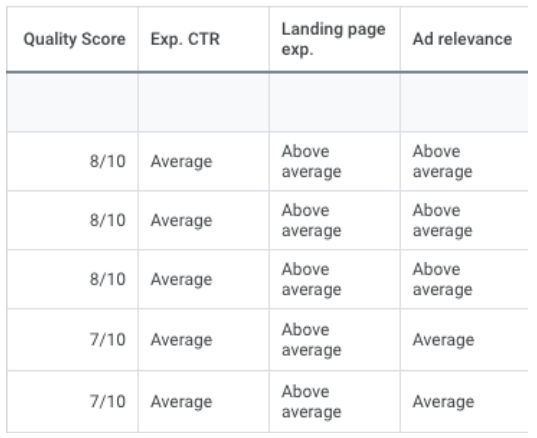Why Bidding On Competitor Keywords Isn’t Recommended For SMBs

‘Can’t we intercept our competitors’ online traffic and drive it to our own website?’ Has to be one of the top most frequently asked questions by paid search campaign managers to the BDG team.
Now, in reality, I fully understand the charm behind this idea: there’s no need to build brand awareness and you can piggyback on existing industry/brand recognition – which is critical for products that are more challenging to categorize with keywords.
Ultimately, for small to medium sized businesses, this seems like a fast track to kick off growth with certainty. Yet, is it really the shortcut to a successful PPC campaign? Let’s discuss.
The Criticality Of Quality Score
The BDG team has done a fair amount of experimentation with this idea – and we concluded that, no, it’s not a recommended tactic for all businesses – especially not businesses that are new or small.
To further explore this topic, we need to first introduce the very key concept of the Quality Score.
Here’s how Google Ads defines a Quality Score:
“Quality Score is a diagnostic tool meant to give you a sense of how well your ad quality compares to other advertisers.
This score is measured on a scale from 1-10 and available at the keyword level. A higher Quality Score means that your ad and landing page are more relevant and useful to someone searching for your keyword, compared to other advertisers.”
In plain language, your Quality Score is a reflection of ad relevance and the user experience in comparison to your competitors. You can view this data on your Google Ads dashboard:

As a result, the lower the quality score, the lower the relevancy. The lower the relevancy – the harder it is for ads to show up for your ideal customer. The lower the relevancy, the more expensive the ad becomes.
But how does Google determine what’s relevant and what’s not? Here are the three components that influence how Google determines the Quality Score for an ad:
- How often users click on the ads when they see it
- How relevant the ad copy is to the search query
- How relevant the landing page is to the search query.
Each component is measured nomically: below average, average, and above average.
The Cons Of Competitor Campaigns
Now that we understand what Quality Score is for and how Google uses it to determine which ads to show for which search query, it becomes clearer why competitor campaigns are not the optimal solution for rapid traffic acquisition.
In general, from employing such a strategy, businesses could expect the following cons :
Con #1: More expensive traffic
Since competitor brand names have little to do with the advertiser, the Quality Score for your keywords would naturally be lower no matter what optimization you put into place.
Therefore, for ads to show up, businesses will pay more per click and see paid media traffic cost surge as a result.
Since we’d be intercepting a competitor’s traffic, users are usually either in the process of converting to said competitor brand or still researching different options, so the conversion rate on the landing page would naturally be lower.
Con #2: May cause a bid war
If the competitor has a well-established paid search project with dedicated specialists monitoring the search trends and auction insights, it would be only a matter of time before the competitor catches that there are other businesses bidding on their brand names.
If the competitor decides to counter bid, it may cause a pretty malicious bid war – which will drive up the cost per click for the desired keywords.
Con #3: Risk of being marked as spam or phishing website
If the value offered is not what the user is looking for, businesses run the risk of annoying or upsetting the potential customer and being reported as a malicious website.
This has long-lasting and very negative effects on not only the paid media campaigns but also any Search Engine Optimization efforts. In rare cases, it will also lead to the entire website to be shut down and removed from the search engine results.
Con #4: Difficult to scale and sustain growth
The traffic volume of a competitor campaign is heavily dependent on the competitor, and will grow only if the other business keeps investing in brand awareness.
In the long term, this tactic is not sustainable as your business needs to scale and reach new customers on its own two feet to build worthwhile credibility and authority.
That being said, every business faces a different reality – and some advertisers may have the budget for experimentation. In that case, we recommend deploying the following tactics to optimize the setup of a competitor campaign:
- Use a dedicated landing page for the campaign. Choose either a white-labeled comparison chart or a detailed blog post analyzing the related products.
- Position competitive edges up and front. Include clear messaging that focuses on what your business does better than the competitor. This can include pricing, customer services, packages, and more.
- Test different campaign and media types. Native, video, programmatic, and performance max are all great starting points. As the old saying goes: don’t put all of your eggs into one basket!
The Bottom Line
To conclude, we do not recommend a competitor campaign for the majority of small business owners.
Your time and resources are better spent on building a solid pool of keywords, developing brand awareness, and structuring your paid strategy to encompass the entire customer journey – from consideration to conversion.

